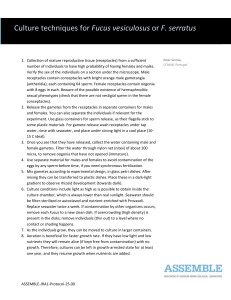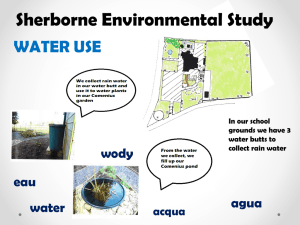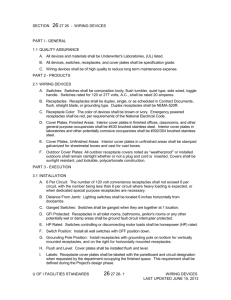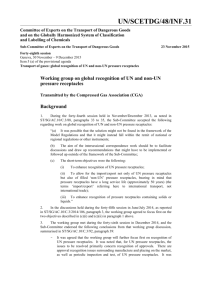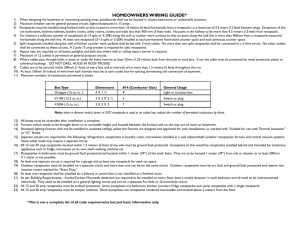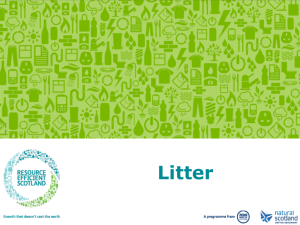Commercial guidance on waste and recycling
advertisement
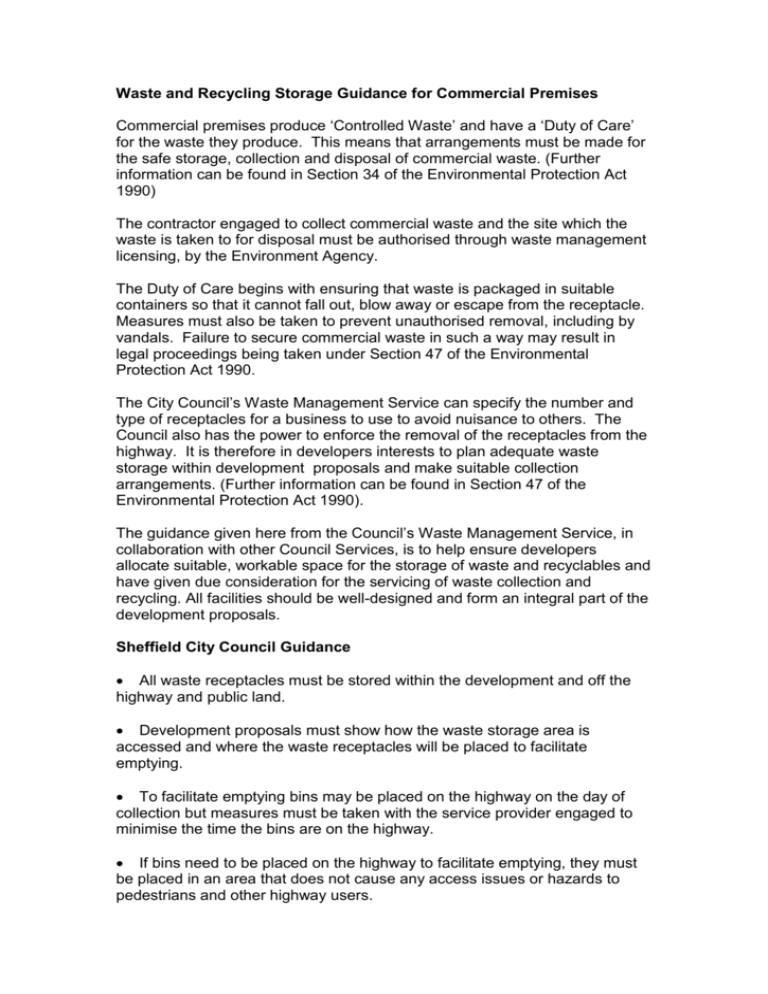
Waste and Recycling Storage Guidance for Commercial Premises Commercial premises produce ‘Controlled Waste’ and have a ‘Duty of Care’ for the waste they produce. This means that arrangements must be made for the safe storage, collection and disposal of commercial waste. (Further information can be found in Section 34 of the Environmental Protection Act 1990) The contractor engaged to collect commercial waste and the site which the waste is taken to for disposal must be authorised through waste management licensing, by the Environment Agency. The Duty of Care begins with ensuring that waste is packaged in suitable containers so that it cannot fall out, blow away or escape from the receptacle. Measures must also be taken to prevent unauthorised removal, including by vandals. Failure to secure commercial waste in such a way may result in legal proceedings being taken under Section 47 of the Environmental Protection Act 1990. The City Council’s Waste Management Service can specify the number and type of receptacles for a business to use to avoid nuisance to others. The Council also has the power to enforce the removal of the receptacles from the highway. It is therefore in developers interests to plan adequate waste storage within development proposals and make suitable collection arrangements. (Further information can be found in Section 47 of the Environmental Protection Act 1990). The guidance given here from the Council’s Waste Management Service, in collaboration with other Council Services, is to help ensure developers allocate suitable, workable space for the storage of waste and recyclables and have given due consideration for the servicing of waste collection and recycling. All facilities should be well-designed and form an integral part of the development proposals. Sheffield City Council Guidance All waste receptacles must be stored within the development and off the highway and public land. Development proposals must show how the waste storage area is accessed and where the waste receptacles will be placed to facilitate emptying. To facilitate emptying bins may be placed on the highway on the day of collection but measures must be taken with the service provider engaged to minimise the time the bins are on the highway. If bins need to be placed on the highway to facilitate emptying, they must be placed in an area that does not cause any access issues or hazards to pedestrians and other highway users. Development proposals must therefore show how it is intended to accommodate the waste arising from any commercial premises (and must be separate from waste generated from any residential properties occupying the same site). A management plan must show how the proposals ensure that waste is stored securely to prevent other businesses or persons depositing their waste; people gaining physical access into the bins/ skips (such as rough sleepers) and how waste will be contained to prevent litter nuisance. Containers that have lockable lid mechanisms should be considered. In accordance with Building Regulations 2000 H6, waste storage areas should have an impervious floor and provision for washing down and draining the floor into a system suitable for receiving effluent. The Council is committed to Environmental Excellence, sustainable development and promoting sustainable waste management. Measures should be taken to reduce the amount of waste produced. Space should be provided to segregate at least one material the waste stream for recycling. There are currently services for glass and paper recycling operating around Sheffield City Centre. The development may be subject to Planning Conditions which limit the times for servicing if it is close to or includes residential accommodation. Calculation of Waste Storage Capacity When considering the amount of storage space needed for waste, the information below is intended as a guide only, given each individual development will have different systems for operating and therefore different levels of waste generated. All of the information provided assumes that approximately one third of the space allocated will be dedicated to the storage of segregated material for recycling. Offices 2600 litres of waste storage for every 1000m2 gross floor space. Retail 5000 litres of waste storage for every 1000m gross floor space. Restaurants/ Fast Food Outlets 10000 litres of waste storage for every 1000m2 gross floor space Hotels 7500 litres of waste storage for every 1000m2 gross floor space Dimension Guidance The following are approximate measurements for standard waste receptacles, this list is not exclusive and different waste collection contractors may provide slightly different sized receptacles and other receptacles such as skips or compactors. Adequate height must be allowed for the lids to open fully, this would need a room height of 2.3 metres. And a minimum 500mm band around each receptacle should be provided to allow for rotating receptacles if more than one is needed. 240 litre bin 360 litre bin 660 litre bin 1100 litre bin Width 600mm 600mm 1265mm 1270mm Depth 750mm 880mm 750mm 1000mm Height 1100mm 1100mm 1380mm 1380mm Waste Collection Vehicles There is a need to ensure that servicing vehicles can readily access waste receptacles without contravening parking restrictions or causing an obstruction. Refuse collection vehicles should not be expected to reverse more than 12 metres to gain access to refuse containers. The access dimensions of the waste collection vehicle and different operators may vary but as a general guide, a 32 tonne waste collection vehicle is 12.5 metres in length, 3.2 metres in width and 4.2 metres in height. Litter If the development has any land where litter accumulates and becomes unsightly, the owner may be subject to a Litter Control Notice. This Notice may require the land to be cleared regularly and maintained to a specified standard. (Further information is in Section 94 of the Environmental Protection Act 1990) Where a litter problem can be clearly attributed to certain types of business, such as mobile vendors or market stalls, again a Street Litter Control Notice may be issued. This Notice as well as the action above, may require the provision of receptacles for waste, to be maintained at the expense of the business or for the undertaking of regular litter inspections, to clear any litter on land up to 100m away. (Further information can be found in Section 94 of the Environmental Protection Act 1990)
